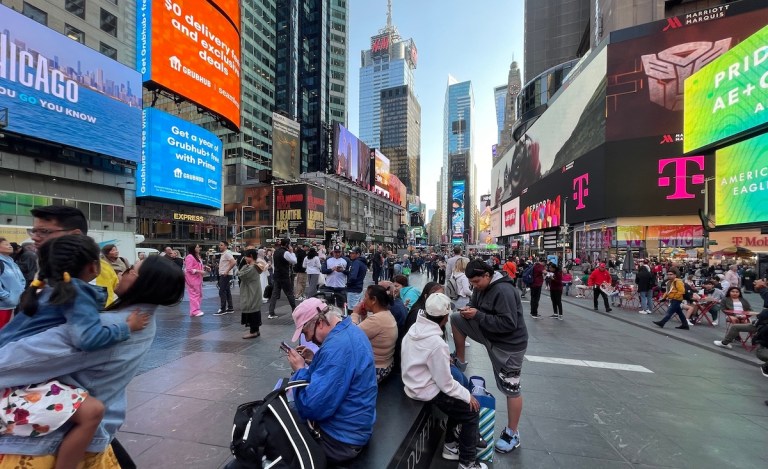Lingering Office Closures Hit Hard for Times Square Small Businesses

Small businesses in Times Square are reportedly struggling in the post-pandemic environment.
While crowds have returned to the New York City neighborhood, they are smaller than they were before the pandemic, and they include a notable reduction in the numbers of office workers and tourists, The Wall Street Journal (WSJ) reported Friday (June 2).
Offices that were nearly full before the pandemic are still less than 50% occupied, according to the report.
At the same time, the percentage of seats occupied in Broadway theaters has dropped from 91% to 88%, the number of tourists visiting the city has fallen from 66 million to 56 million, and the number of daily visitors to Times Square, in particular, has declined by 20%, the report said.
Compounding the challenge for small businesses, costs have been rising due to inflation, per the report.
The borough in which Times Square is located, Manhattan, saw 5,200 private businesses close between 2019 and 2021. Now, for the first time, Manhattan houses less than half of New York City’s businesses, according to the report.
Small businesses have been especially hard hit because they don’t have the name recognition of national chains. They relied on the steady business from those who used to work in nearby offices and would visit them for lunch and happy hour, the report said.
It was reported in November that Manhattan’s Fifth Avenue became the world’s most expensive retail destination, overtaking Hong Kong’s famed luxury district.
Average annual rents for Upper Fifth Avenue shops were gauged at $2,000 per square foot during the third quarter of 2022, a figure that was 14% higher than it was before the pandemic.
Small- to medium-sized businesses (SMBs) nationwide have been combatting the challenge of inflation.
From July 2022 to January 2023, the primary way SMBs fought inflation was by raising prices, according to “Main Street Health Q1 2023: Using Finance to Ease Recession Fears,” a PYMNTS and Enigma collaboration.
The report also said this strategy risks running afoul of “shopper price rebellion.”



